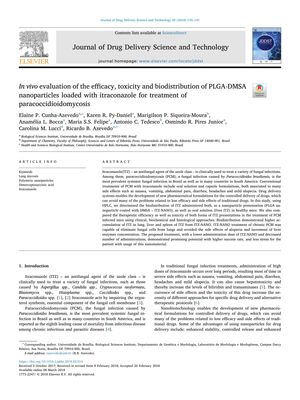In Vivo Evaluation of the Efficacy, Toxicity, and Biodistribution of PLGA-DMSA Nanoparticles Loaded with Itraconazole for Treatment of Paracoccidioidomycosis
March 2018
in “
Journal of Drug Delivery Science and Technology
”

TLDR Itraconazole-loaded nanoparticles are more effective and less toxic for treating fungal infections than conventional oral itraconazole.
The study from 2018 investigated the use of itraconazole-loaded PLGA-DMSA nanoparticles (ITZ-NANO) versus conventional oral itraconazole (Free ITZ) for treating paracoccidioidomycosis (PCM) in mice. ITZ-NANO demonstrated significantly higher drug accumulation in the lungs and spleen, with up to 160 times more in the lungs and 300 times more in the spleen compared to Free ITZ. After 30 days of treatment, ITZ-NANO effectively eliminated fungal cells from the lungs without causing granulomas or significant inflammation, while Free ITZ did not. After 60 days, the lungs of ITZ-NANO treated mice resembled those of healthy animals, whereas Free ITZ treated mice still showed inflammation. Clinically, ITZ-NANO treated mice experienced minimal weight loss and maintained normal fur, while Free ITZ treated mice had significant weight loss and developed alopecia. The study concluded that ITZ-NANO is a more effective and less toxic treatment option for PCM, requiring lower doses and less frequent administration, which could lead to better patient compliance and potential cost savings.
